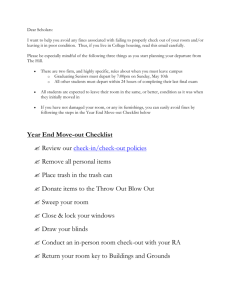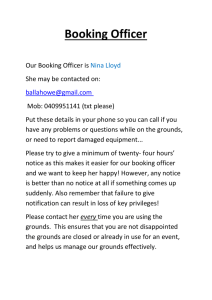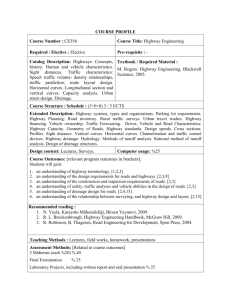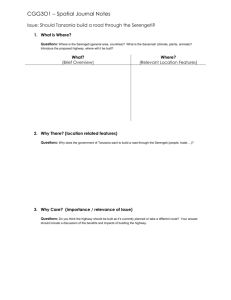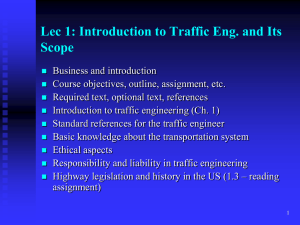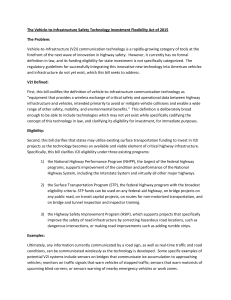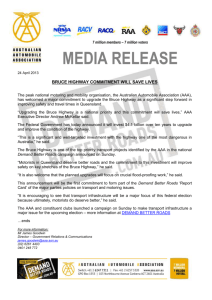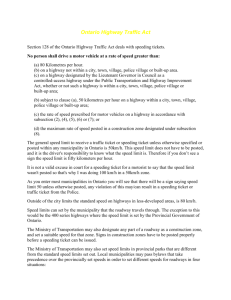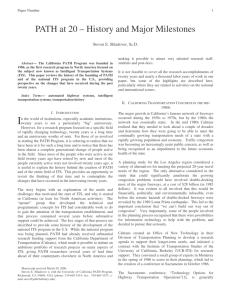Sen. Appropriations
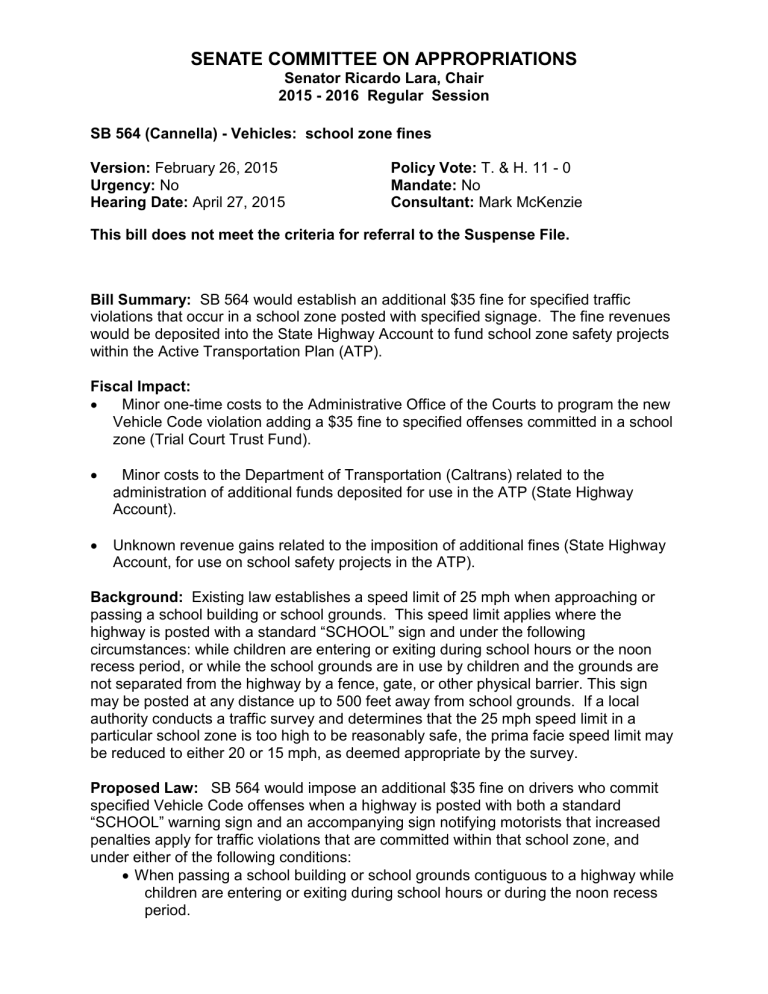
SENATE COMMITTEE ON APPROPRIATIONS
Senator Ricardo Lara, Chair
2015 - 2016 Regular Session
SB 564 (Cannella) - Vehicles: school zone fines
Version: February 26, 2015 Policy Vote: T. & H. 11 - 0
Urgency: No
Hearing Date: April 27, 2015
Mandate: No
Consultant: Mark McKenzie
This bill does not meet the criteria for referral to the Suspense File.
Bill Summary: SB 564 would establish an additional $35 fine for specified traffic violations that occur in a school zone posted with specified signage. The fine revenues would be deposited into the State Highway Account to fund school zone safety projects within the Active Transportation Plan (ATP).
Fiscal Impact:
Minor one-time costs to the Administrative Office of the Courts to program the new
Vehicle Code violation adding a $35 fine to specified offenses committed in a school zone (Trial Court Trust Fund).
Minor costs to the Department of Transportation (Caltrans) related to the administration of additional funds deposited for use in the ATP (State Highway
Account).
Unknown revenue gains related to the imposition of additional fines (State Highway
Account, for use on school safety projects in the ATP).
Background: Existing law establishes a speed limit of 25 mph when approaching or passing a school building or school grounds. This speed limit applies where the highway is posted with a standard “SCHOOL” sign and under the following circumstances: while children are entering or exiting during school hours or the noon recess period, or while the school grounds are in use by children and the grounds are not separated from the highway by a fence, gate, or other physical barrier. This sign may be posted at any distance up to 500 feet away from school grounds. If a local authority conducts a traffic survey and determines that the 25 mph speed limit in a particular school zone is too high to be reasonably safe, the prima facie speed limit may be reduced to either 20 or 15 mph, as deemed appropriate by the survey.
Proposed Law: SB 564 would impose an additional $35 fine on drivers who commit specified Vehicle Code offenses when a highway is posted with both a standard
“SCHOOL” warning sign and an accompanying sign notifying motorists that increased penalties apply for traffic violations that are committed within that school zone, and under either of the following conditions:
When passing a school building or school grounds contiguous to a highway while children are entering or exiting during school hours or during the noon recess period.
SB 564 (Cannella) Page 2 of 2
When passing school grounds that are not separated from a highway by a fence, gate, or barrier while the grounds are in use by children.
Revenues from the additional fines authorized by this bill would be deposited in the
State Highway Account for funding school zone safety projects within the ATP.
Related Legislation: SB 1151 (Cannella), which was vetoed by Governor Brown in
2014, is nearly identical to this bill. The veto message included the following statement:
Increasing traffic fines as the method to pay transportation fund activities is a regressive increase that affects poor people disproportionately. Making safety improvements in school zones is obviously important, but not by increasing traffic fines.
Staff Comments: The 2013-14 budget agreement consolidated several existing federal and state transportation funding programs, including the Transportation
Alternatives Program, the Bicycle Transportation Account, and the Safe Routes to
Schools Program, and created the ATP to encourage increased use of active modes of transportation, such as biking and walking. The California Transportation Commission
(CTC) adopted an initial fund estimate to allocate $368 million in state and federal funds over a three year cycle from 2013-14 through 2015-16. The CTC recently adopted a
2015 ATP fund estimate, which anticipates allocations of approximately $360 million in state and federal funds over the following three years (2016-17 through 2018-19).
Staff notes that the additional fines specified in the bill would only be imposed to the extent the roadway is posted with the standard “SCHOOL” warning sign and additional signage notifying motorists that increased penalties apply for traffic violations committed within that school zone. The bill does not require local jurisdictions or Caltrans to install these additional notification signs. The magnitude of additional revenues from the imposition of the additional $35 fine is indeterminable and dependent upon the number of zones that are ultimately posted with increased penalty notification signage and the level of enforcement in those zones. Caltrans indicates that any staffing costs associated with administering additional revenues for school zone safety projects through the ATP would be minor.
-- END --
